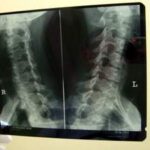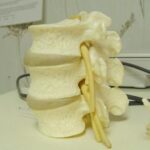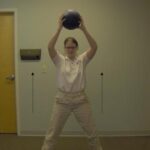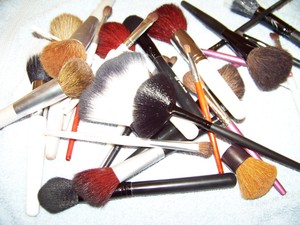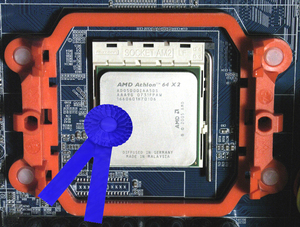Those with cervical spinal stenosis often lose arm, shoulder and wrist strength. The discs of the cervical spine are sometimes herniated, the corresponding nerves become constricted, and the muscles are compromised. Many simple things that someone with cervical spinal stenosis could once do without thought or hesitation becomes laborious, and lifting too much can cause even more pain and discomfort that lasts for days. Depending on the severity of the condition, non-surgical help might be available in the form of physical therapy.
I have cervical spinal stenosis, and although I had surgery for my condition approximately eight years ago, I still have major problems, but they are not problems that I cannot overcome. Before seeking help through physical therapy I suffered from terrible headaches that would unexpectedly come on about once every six to eight weeks. These headaches are debilitating, and they radiate from the hypersensitive nerves at the base of my skull. This results in bouts of vomiting that lasts all day. I end up going to bed early, and fortunately upon waking up the following day, most of the time no trace of the pain remains. Instead, the area of the surgery feels more numb than ever, but this is a welcomed feeling compared to the pain. I am currently going through physical therapy, and by sharing information on the exercises I have been given, I want to give hope to others with cervical spinal stenosis who are wondering if physical therapy is worth the time and effort.
Precautionary Statement Regarding Physical Therapy at Home
This information is based on my personal experience, and it explains the methods that have helped my specific condition. Before participating in any at-home physical therapy, consult your doctor or physical therapist for professional advice. Physical therapists create a plan to match a patient’s individual requirements, and the following methods chosen to treat my case of cervical spinal stenosis may or may not be right for your particular needs.
How Does Physical Therapy Help Those with Cervical Spinal Stenosis?
When muscles have been compromised because of surgery or a medical condition such as cervical spinal stenosis, it is important to keep moving. Exercise targets specific muscles and encourages strengthening. Stretching can help align herniated discs and help prevent painful conditions such as the headaches I have experienced. I did not think that physical therapy could help my condition, but after just five sessions and two weeks of at-home exercises, I have noticed a tremendous difference in my level of strength and how I feel.
Begin with Heat Before Physical Therapy
Before I begin the following exercises and treatment for cervical spinal stenosis at the physical therapy facility, heat is applied to my neck for approximately ten minutes. The heat is moist, and it is applied using a heavy water-soaked pad that is drained and covered with a heavy towel. It is kept at 160 degrees Fahrenheit before it is removed and applied to the back of my neck. To the best of my knowledge, this type of heating system is not available at home, but moist heat seems to work the best. It feels similar to a very warm shower or bathtub soak, and it feels fantastic. Instead of using an electric heating pad at home, consider using a hot water bottle wrapped in a moist terrycloth towel. Lay on your back in a relaxed position for approximately ten minutes with the towel-covered water bottle in place. Not only will the heat feel good, but it will prepare the muscles for stretching, and it will promote blood flow to the affected area.
Traction Alternative for Physical Therapy at Home
After heat is applied to my neck, my head is placed in a portable traction device, and air is pumped into the device to pull up on my neck as I lay on a cushioned table. I remain in this position for approximately fourteen minutes. This takes the pressure off of the discs and nerves. The fingers of my right hand that are usually slightly numb and tingly have a little more feeling, and the position is comfortable. After the traction I almost feel as good as I did before ever experiencing the symptoms of cervical spinal stenosis. Traction devices like those used in professional physical therapy facilities can be purchased for use at home, but they are quite expensive. To provide relief at home without investing in traction devices, roll up a thin bath towel or two hand towels, and place the roll beneath the neck while lying on a hard flat surface. Pull the chin inward and hold it for a few seconds before relaxing with the back of the head lightly resting back upon the flat surface. I was instructed to repeat this exercise three different times throughout the day in sets of ten.
Simple Shoulder Crunches
After fourteen minutes of traction at the physical therapy facility I complete twenty shoulder crunches to avoid the headaches and other symptoms of cervical spinal stenosis. This involves sitting comfortably on a cushioned table and pushing my shoulder blades together twenty times. It is a very easy exercise, and it has seemed to increase the strength of my muscles and improve the cervical spinal stenosis symptoms. So far I have not experienced further headaches or neck pain.
Standing Shoulder Crunches
Once shoulder crunches are completed while sitting, I do more of the same type of crunches in a standing position while facing the corner of a wall at the physical therapy facility and at home. Both hands are placed on the wall while facing the corner, and I move my body forward to push my shoulder blades together a total of ten times. This exercise was added the fourth day of the physical therapy, and I complete three sets throughout the course of the day.
Backward Shoulder Shrugs
To keep good posture and prevent rounded shoulders, therapy for cervical spinal stenosis symptoms often includes backward shoulder shrugs. I was instructed to move my shoulders up and back in a rounded motion ten times, and when doing physical therapy at home I complete this exercise three times a day. I sometimes do this more often when I am working on my computer or watching television.
Elastic Band Strengthening and Cervical Spinal Stenosis
On the fifth day of professional physical therapy, an elastic band was added to my therapy schedule to help increase the strength I lost because of cervical spinal stenosis. The therapist holds the center of the band while I pull back on it ten times using both arms. I do this exercise at home by wrapping an elastic band around a bedpost or a post on a stair railing, and it works just as well. The exercises I have been given have increased my strength, and I will continue to do them, not only to gain strength but also to avoid the headaches that were caused by the discs in my neck pressing against my spinal cord.
Cervical Spinal Stenosis and Massage Therapy
At the end of each physical therapy session I have been treated to a deep massage. My muscles were always tense before beginning physical therapy, and the massage and exercises specifically designed for my cervical spinal stenosis problem have helped tremendously. The therapist can tell when my muscles are tight. They feel like elastic bands that have stretched to their limit, and when they are extremely tight the massage is somewhat uncomfortable. It feels as if tight bands of muscle are ready to snap as the therapist runs her fingers and thumbs over the extremely tight areas. They snap and crunch during the massage, but she knows just how to relieve the tension.
I would recommend physical therapy to anyone with cervical spinal stenosis, but only your doctor can prescribe professional physical therapy. Talk to your doctor about your particular condition, and take it from someone with cervical spinal stenosis who once wondered if physical therapy was worth the time and effort. It really can make a difference.
